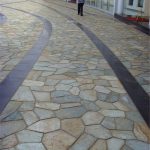The Evolution and Advantages of Precast Cultured Stone in Construction
Introduction In the world of construction, the use of precast materials has significantly evolved over the years, offering innovative solutions for builders and architects alike. Precast cultured stone is a prime example of this evolution, combining the beauty and durability of natural stone with the efficiency and versatility of precast technology. This article will delve into the history, manufacturing process, benefits, applications, and future prospects of precast cultured stone in construction. History of Precast Cultured Stone The concept of using cultured stone in construction dates back to ancient times when civilizations utilized various materials to create decorative and functional structures. However, the modern form of precast cultured stone emerged in the mid-20th century as an alternative to natural stone. Initially, artisans handcrafted each piece to mimic the appearance of natural stone, but advancements in technology have since revolutionized the manufacturing process. Manufacturing Process The production of precast cultured stone involves a meticulous process that combines cement, aggregates, and iron oxide pigments to create a moldable material. The mixture is poured into molds that replicate the texture and shape of natural stone, allowing for a high degree of customization. Once the material sets, it is cured and then treated to achieve the desired color and finish. The result is a product that closely resembles the appearance of natural stone but with added benefits in terms of consistency and cost-effectiveness. Best cultured stone for home exterior of Precast Cultured Stone 1. Cost-Effective: One of the primary advantages of precast cultured stone is its cost-effectiveness compared to natural stone. The manufacturing process is highly efficient, allowing for mass production at a lower cost. This cost savings can be particularly advantageous for large-scale projects where natural stone may be prohibitively expensive. 2. Lightweight: Precast cultured stone is significantly lighter than natural stone, making it easier to transport, handle, and install. This lightweight nature also reduces the structural load on buildings, resulting in potential cost savings during construction. 3. Versatility: Precast cultured stone offers a high degree of versatility in terms of color, texture, and shape. Builders and architects can choose from a wide range of options to achieve their desired aesthetic, whether it be a rustic cobblestone look or a sleek modern finish. 4. Durability: Despite its lightweight nature, precast cultured stone is highly durable and weather-resistant. It can withstand harsh environmental conditions, making it an ideal choice for both interior and exterior applications. 5. Sustainability: The manufacturing process of precast cultured stone is relatively eco-friendly compared to natural stone extraction. By using recycled materials and minimizing waste, precast cultured stone contributes to sustainable building practices. Applications of Precast Cultured Stone  1. Exterior Cladding: Precast cultured stone is commonly used as exterior cladding on buildings to enhance their aesthetic appeal. Whether applied to entire facades or accent features, cultured stone can create a striking visual impact. 2. Interior Walls: The versatility of precast cultured stone extends to interior applications, where it can be used to create accent walls, fireplace surrounds, and other decorative elements. Its lightweight nature makes it easy to install in various indoor spaces. 3. Landscaping: Precast cultured stone is also popular in landscaping projects, where it can be used for retaining walls, garden borders, and decorative hardscape features. Its durability and weather resistance make it well-suited for outdoor environments. 4. Architectural Elements: From columns and archways to cornices and balustrades, precast cultured stone can be used to create a wide range of architectural elements that add character and charm to buildings. Future Prospects of Precast Cultured Stone As the construction industry continues to evolve, the future prospects of precast cultured stone look promising. Advances in technology and material science are likely to further enhance the quality and customization options of cultured stone products. Additionally, the growing emphasis on sustainability and eco-friendly practices may drive increased adoption of precast cultured stone as a greener alternative to natural stone. Conclusion Precast cultured stone represents a harmonious blend of aesthetics, durability, and efficiency in construction. Its cost-effectiveness, versatility, and sustainability make it a viable choice for a wide range of applications in both residential and commercial projects. As the construction industry embraces innovation and sustainability, precast cultured stone is poised to play an increasingly prominent role in shaping the buildings of tomorrow.
1. Exterior Cladding: Precast cultured stone is commonly used as exterior cladding on buildings to enhance their aesthetic appeal. Whether applied to entire facades or accent features, cultured stone can create a striking visual impact. 2. Interior Walls: The versatility of precast cultured stone extends to interior applications, where it can be used to create accent walls, fireplace surrounds, and other decorative elements. Its lightweight nature makes it easy to install in various indoor spaces. 3. Landscaping: Precast cultured stone is also popular in landscaping projects, where it can be used for retaining walls, garden borders, and decorative hardscape features. Its durability and weather resistance make it well-suited for outdoor environments. 4. Architectural Elements: From columns and archways to cornices and balustrades, precast cultured stone can be used to create a wide range of architectural elements that add character and charm to buildings. Future Prospects of Precast Cultured Stone As the construction industry continues to evolve, the future prospects of precast cultured stone look promising. Advances in technology and material science are likely to further enhance the quality and customization options of cultured stone products. Additionally, the growing emphasis on sustainability and eco-friendly practices may drive increased adoption of precast cultured stone as a greener alternative to natural stone. Conclusion Precast cultured stone represents a harmonious blend of aesthetics, durability, and efficiency in construction. Its cost-effectiveness, versatility, and sustainability make it a viable choice for a wide range of applications in both residential and commercial projects. As the construction industry embraces innovation and sustainability, precast cultured stone is poised to play an increasingly prominent role in shaping the buildings of tomorrow.